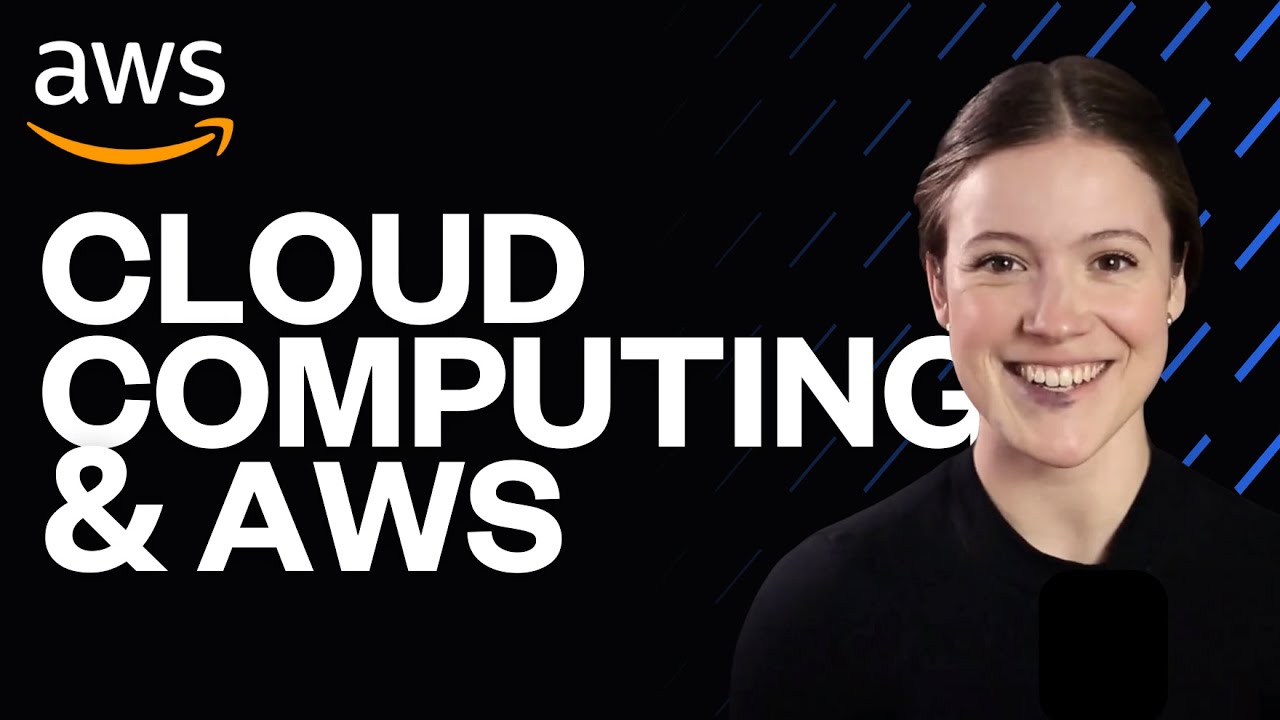Module 1 - Section 1 : Introduction to Cloud Computing
Summary
TLDRThis video provides an insightful introduction to cloud computing, explaining its definition as the on-demand delivery of computing resources via the internet. It highlights the advantages of flexibility, cost efficiency, and speed compared to traditional IT infrastructure. The video covers three primary cloud service models—Infrastructure as a Service (IaaS), Platform as a Service (PaaS), and Software as a Service (SaaS)—and outlines deployment strategies, including public, hybrid, and private clouds. Additionally, it compares AWS services with traditional IT, emphasizing how cloud computing transforms business operations.
Takeaways
- ☁️ Cloud computing is the on-demand delivery of computing resources via the internet, enabling pay-as-you-go pricing.
- 🏢 Traditional computing requires physical hardware, which involves significant upfront investments and maintenance efforts.
- 🔄 Cloud computing allows businesses to view infrastructure as software, offering flexibility and scalability based on demand.
- 🛠️ Infrastructure as a Service (IaaS) provides users with the highest level of control and flexibility over IT resources.
- 📦 Platform as a Service (PaaS) automates infrastructure management, allowing users to focus on application deployment and management.
- 📧 Software as a Service (SaaS) delivers fully managed applications, so users don't need to worry about underlying infrastructure maintenance.
- 🌐 Public cloud resources are shared among multiple customers, while private cloud provides dedicated resources for a single organization.
- 🔗 Hybrid cloud deployment combines public and private clouds, offering enhanced flexibility and integration with existing systems.
- 💰 Cloud computing reduces maintenance costs and accelerates the implementation of new solutions compared to traditional hardware.
- 🚀 The evolution of cloud computing fosters innovation by allowing developers and IT departments to concentrate on business improvement.
Q & A
What is cloud computing?
-Cloud computing is the on-demand delivery of computing power, database storage, applications, and other IT resources via the internet, with a pay-as-you-go pricing model.
How does cloud computing differ from traditional computing?
-Traditional computing relies on physical hardware requiring significant upfront investment, maintenance, and space, whereas cloud computing allows users to manage IT resources as software, offering flexibility and cost efficiency.
What are the three main cloud service models?
-The three main cloud service models are Infrastructure as a Service (IaaS), Platform as a Service (PaaS), and Software as a Service (SaaS). Each model provides varying levels of control and management over IT resources.
What is Infrastructure as a Service (IaaS)?
-IaaS provides fundamental IT resources such as networking, virtual machines, and storage, allowing users high flexibility and control over their IT infrastructure.
What advantages does Platform as a Service (PaaS) offer?
-PaaS automates infrastructure management, enabling developers to focus on application deployment rather than managing the underlying hardware and operating system.
Can you give an example of Software as a Service (SaaS)?
-A common example of SaaS is a web-based email application, where users can send and receive emails without managing the server or operating system.
What are the different cloud deployment models?
-The three cloud deployment models are public cloud, hybrid cloud, and on-premises deployment, each offering different ways to deploy applications and manage resources.
What is a hybrid cloud deployment?
-Hybrid cloud deployment connects existing on-premises infrastructure and applications with cloud-based resources, allowing for a flexible extension of IT capabilities.
What are the benefits of using cloud computing for businesses?
-Cloud computing offers businesses flexibility, scalability, reduced costs, and faster implementation of IT solutions, enabling them to respond quickly to changing needs.
How do AWS features compare to traditional IT infrastructure?
-AWS features, such as security groups and Elastic Load Balancing, have parallels in traditional IT infrastructure, resembling functions like firewalls and network routers, thus making it easier for users to transition to cloud computing.
Outlines

هذا القسم متوفر فقط للمشتركين. يرجى الترقية للوصول إلى هذه الميزة.
قم بالترقية الآنMindmap

هذا القسم متوفر فقط للمشتركين. يرجى الترقية للوصول إلى هذه الميزة.
قم بالترقية الآنKeywords

هذا القسم متوفر فقط للمشتركين. يرجى الترقية للوصول إلى هذه الميزة.
قم بالترقية الآنHighlights

هذا القسم متوفر فقط للمشتركين. يرجى الترقية للوصول إلى هذه الميزة.
قم بالترقية الآنTranscripts

هذا القسم متوفر فقط للمشتركين. يرجى الترقية للوصول إلى هذه الميزة.
قم بالترقية الآن5.0 / 5 (0 votes)






